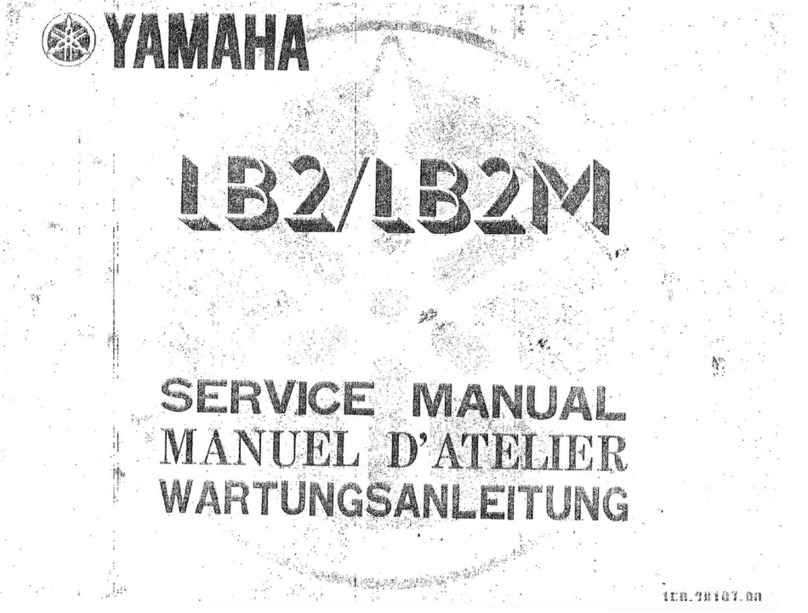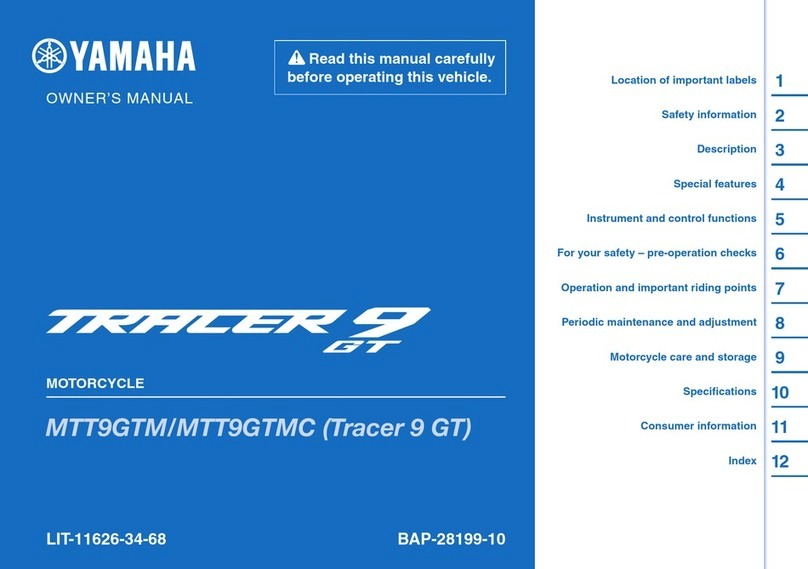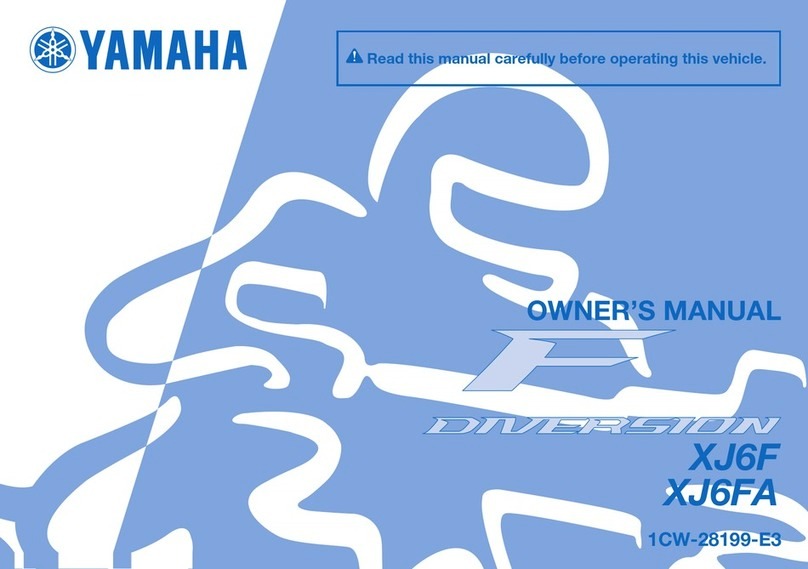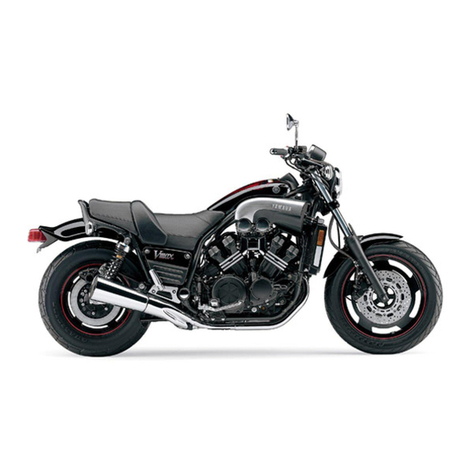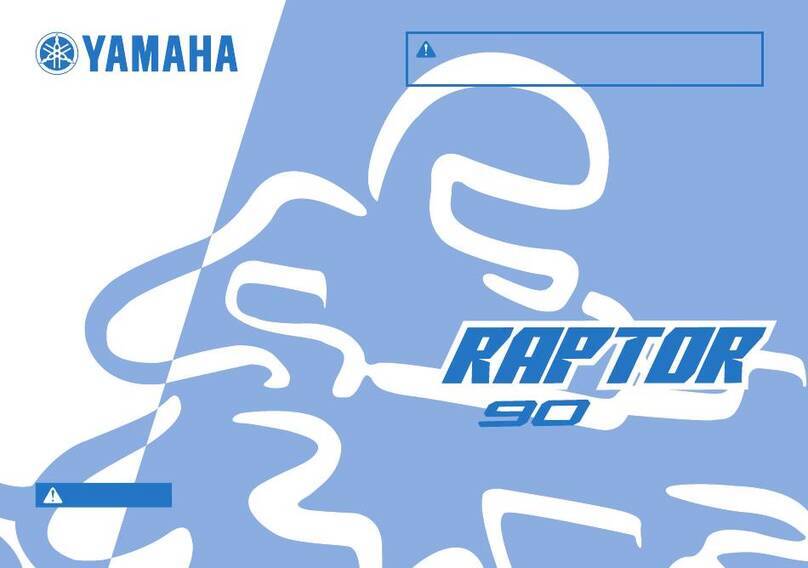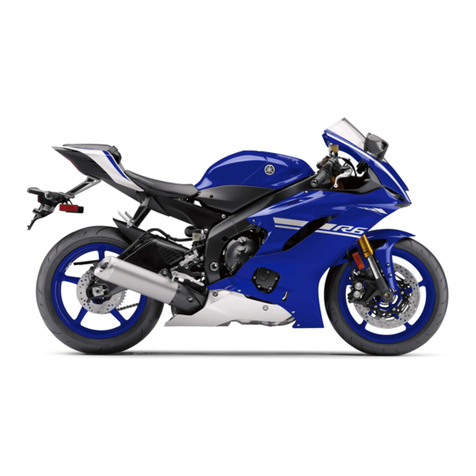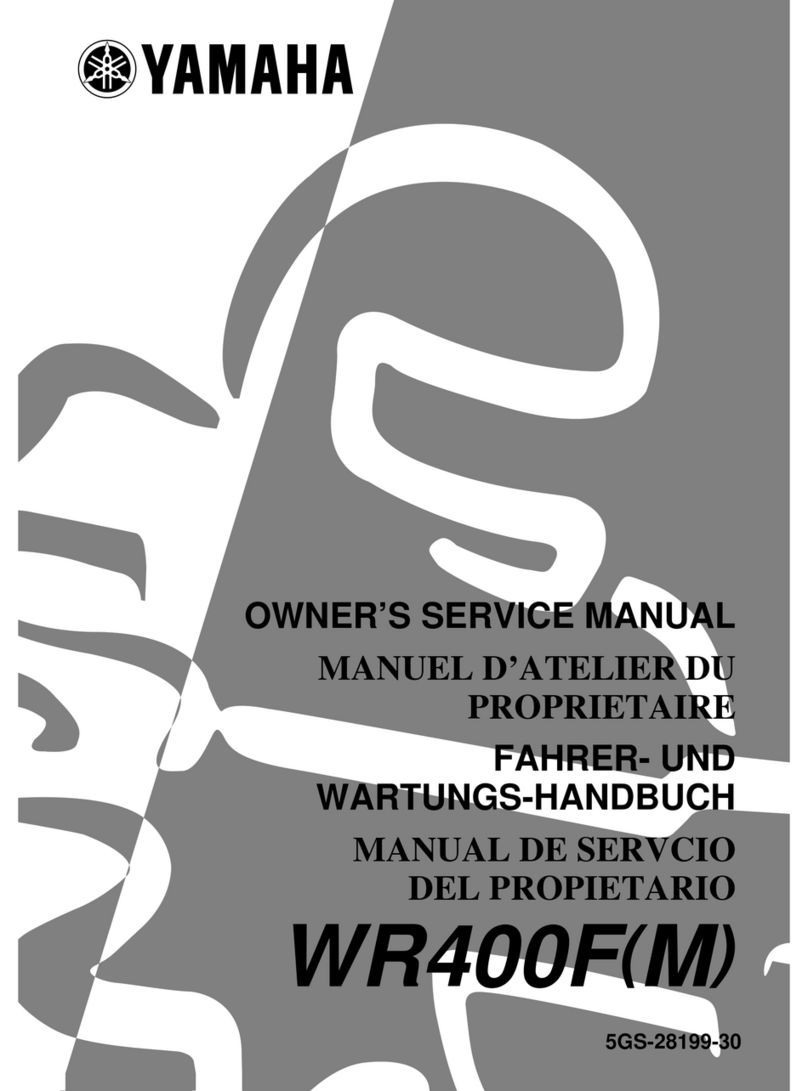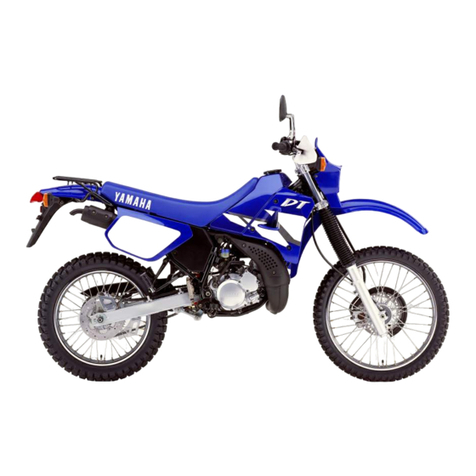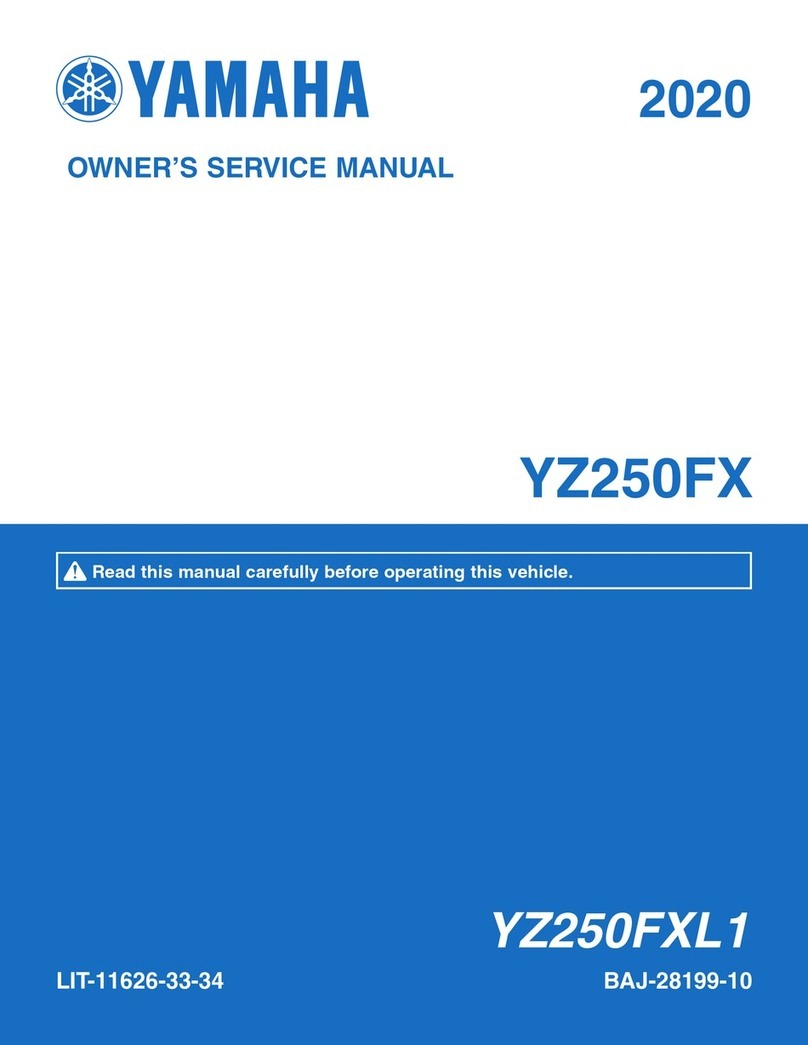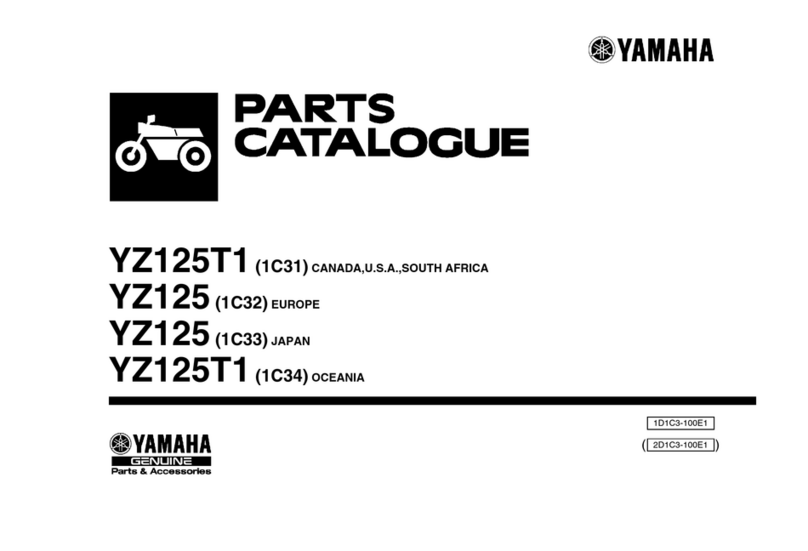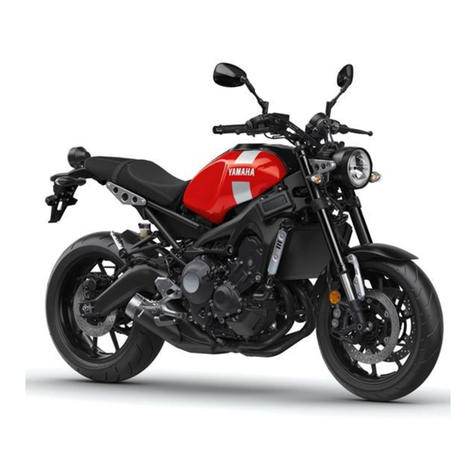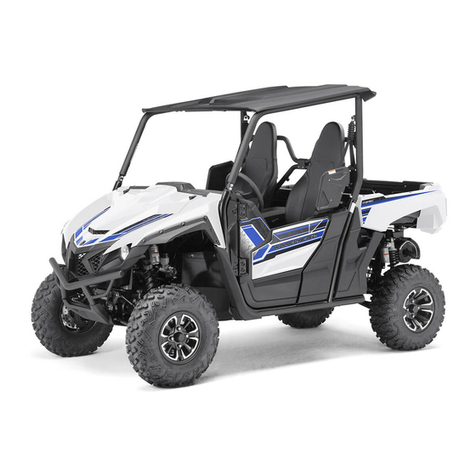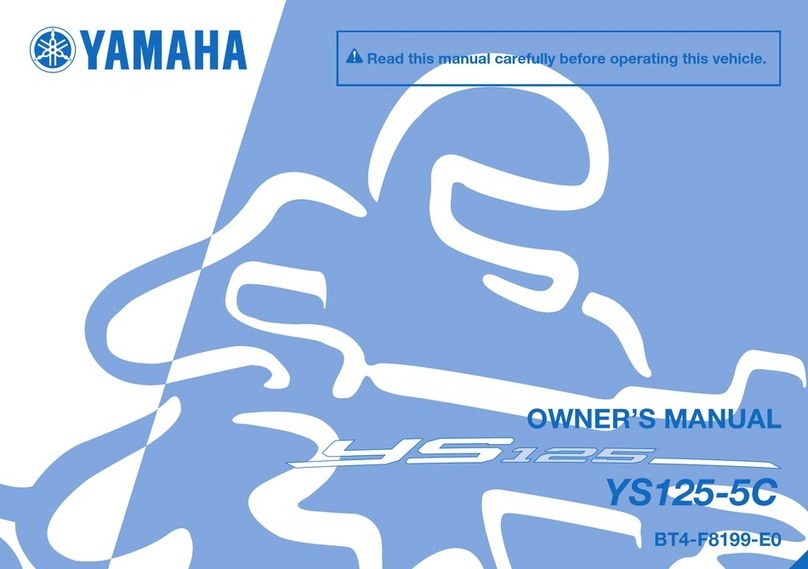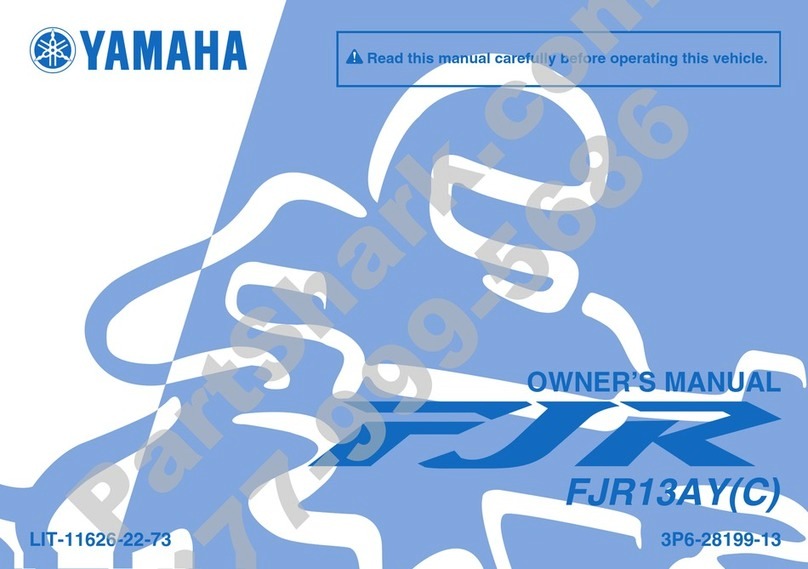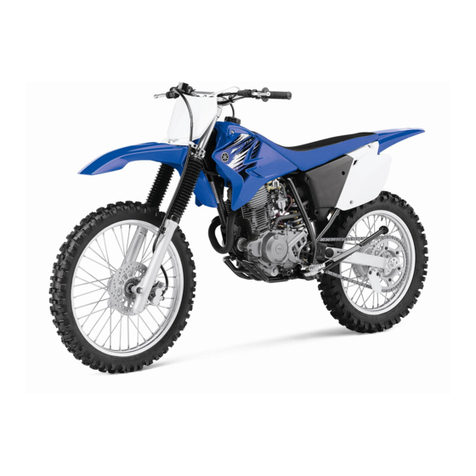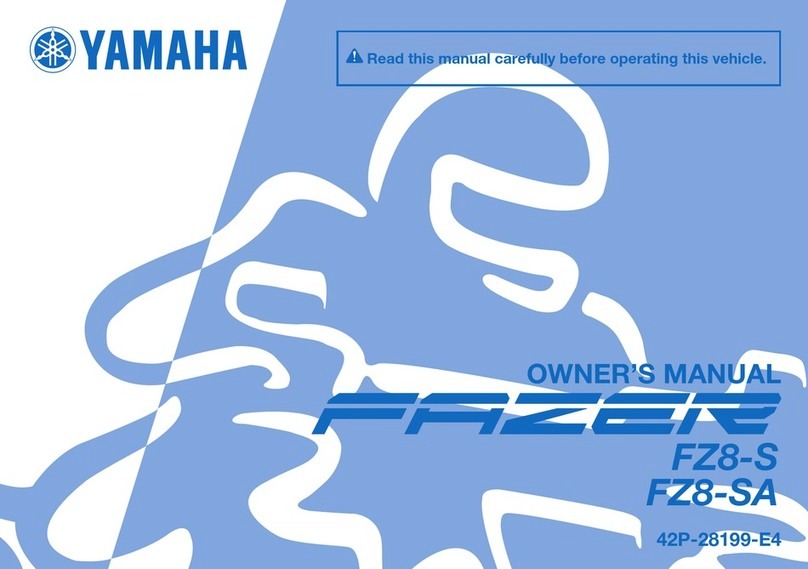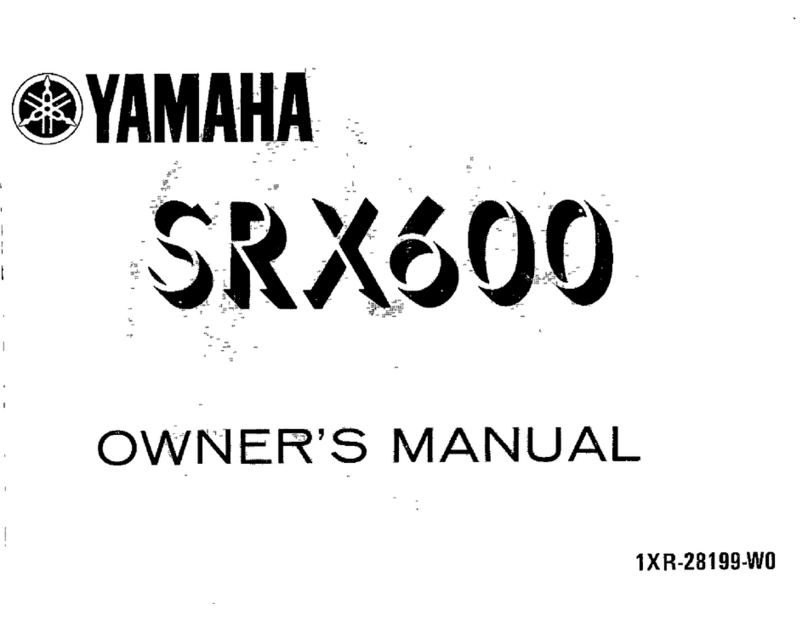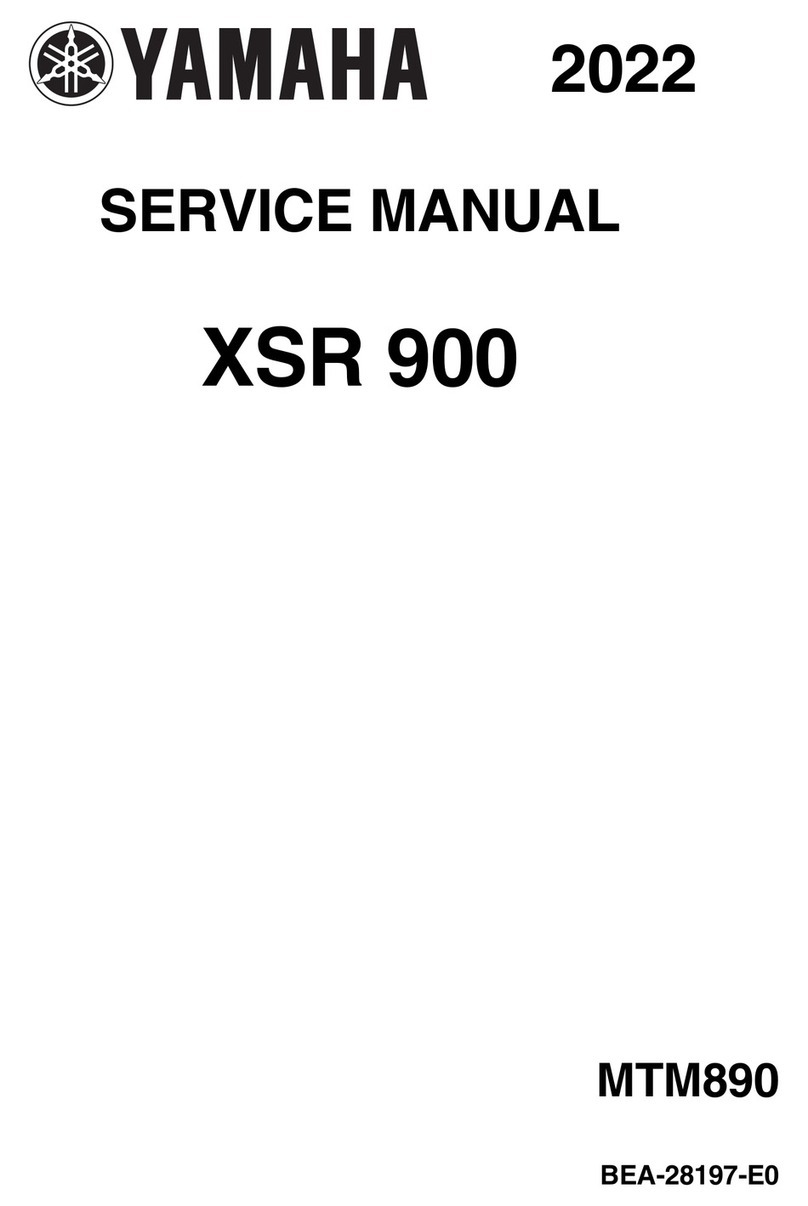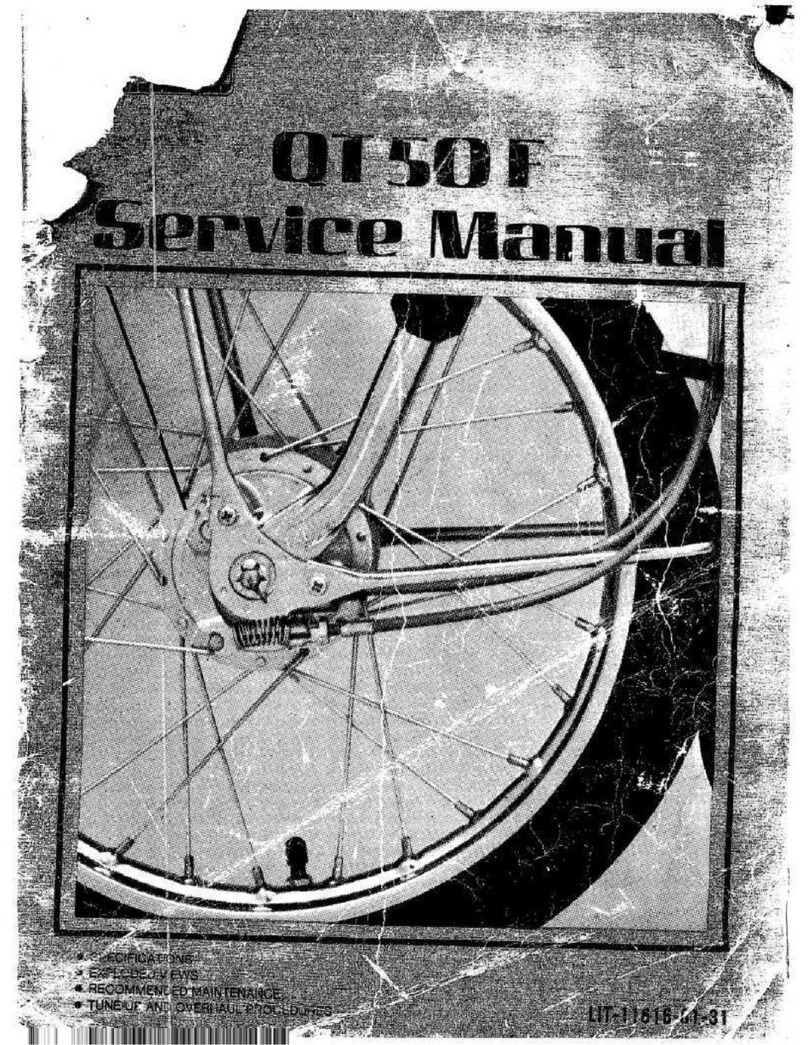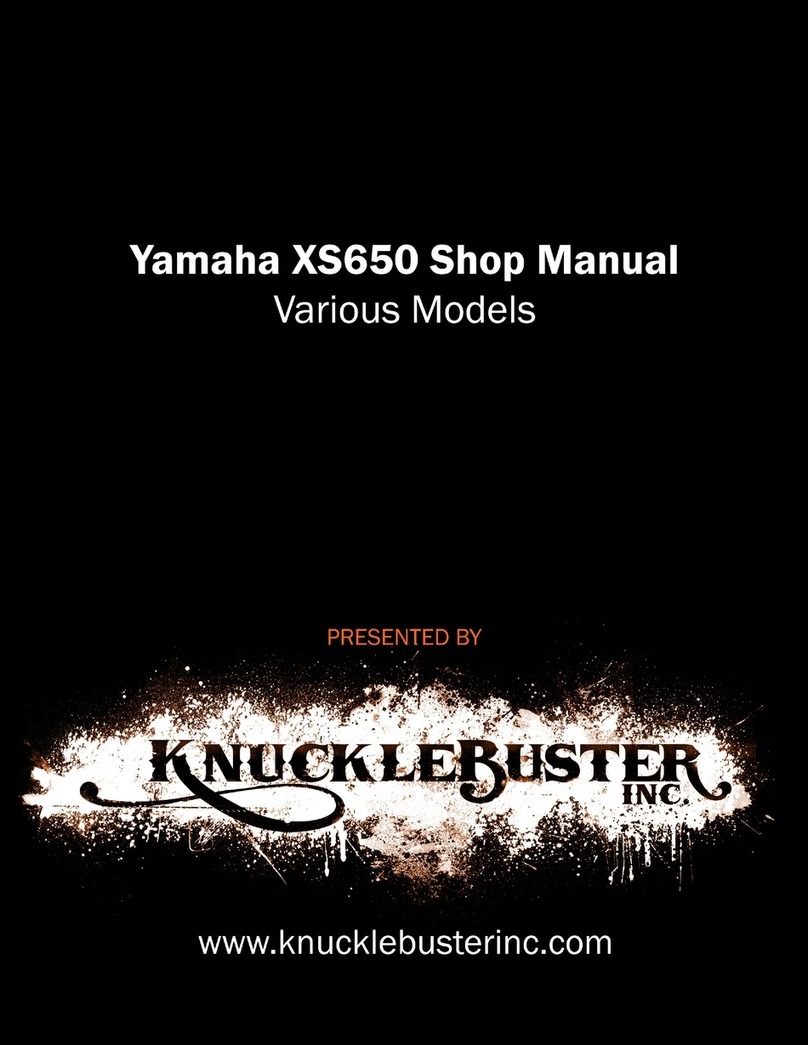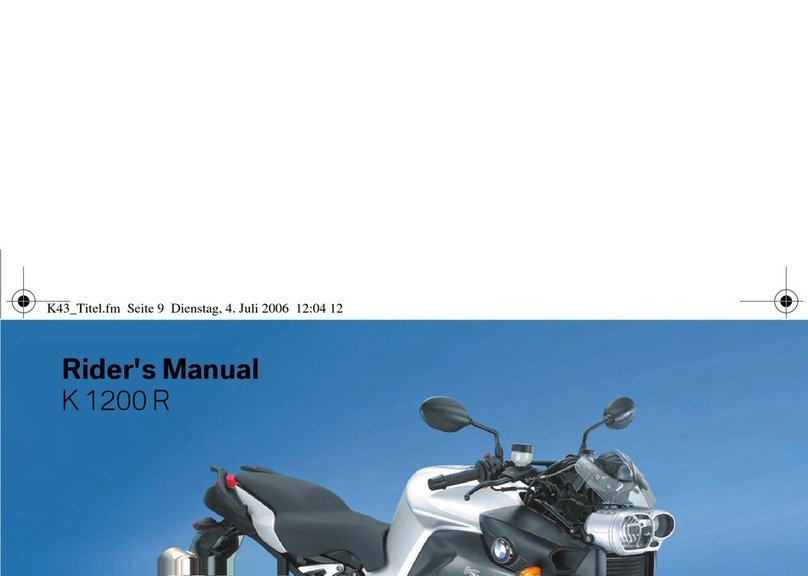
TABLE OF CONTENTS
LOCATION OF IMPORTANTLABEL ....................1-1
DESCRIPTION .......................................................2-1
Left view .....................................................2-1
Right view ....................................................2-2
Controls and instruments.........................2-3
INSTRUMENT AND CONTROL
FUNCTIONS ....................................................3-1
Main switch/steering lock ........................3-1
Indicator lights ..............................................3-3
Speedometer unit .....................................3-3
Fuel gauge ....................................................3-4
Handlebar switches ....................................3-4
Shift pedal .....................................................3-5
Brake lever ...................................................3-5
Brake pedal .................................................3-5
Fuel tank cap ...............................................3-6
Fuel ..................................................................3-6
Starter (choke) lever ................................3-7
Kickstarter ...................................................... 3-8
Seat .................................................................. 3-8
Helmet holders .......................................... 3-9
Storage compartment ............................ 3-9
Sidestand ....................................................... 3-9
PRE-OPERATION CHECKS ............................. 4-1
Pre-operation check list ........................... 4-2
OPERATION AND IMPORTANT
RIDING POINTS ................................................. 5-1
Starting and warming up a
cold engine ...................................................5-1
Starting a warm engine ............................ 5-2
Shifting .......................................................... 5-2
Tips for reducing fuel
consumption ................................................ 5-3
Engine break-in ...........................................5-3
Parking ............................................................ 5-5
General note ................................................ 5-6
PERIODIC MAINTENANCE AND
MINOR REPAIR............................................. 6-1
Owner’
s tool kit ............................................ 6-1
Periodic maintenance and
lubrication chart .......................................... 6-2
Removing and installing the
cowlings and panel 6-5
Checking the spark plug ..........................6-8
Engine oil ....................................................
..................................
6-10
Replacing thea
ir filter element ............ 6-12
Adjusting the engine idling
speed .......................................................... 6-14
Adjusting the throttle cable
free play ................................................... 6-14
Valve clearance ....................................... 6-15
Tires
............................................................... 6-15
Wheels ........................................................ 6-17
Checking the brake lever
free play ..................................................... 6-18
Adjusting the brake pedal
free play .................................................... 6-18
Adjusting the rear brake light
switch ......................................................... 6-19
Checking the front brake pads and
rear brake shoes ...................................... 6-19
Checking the front brake
uid level ................................................... 6-20
Changing the brake f luid .................... 6-20
Drive chain slack .................................... 6-21
Cleaning and lubricating the
drive chain ................................................ 6-23
Checking and lubricating the
cables .......................................................... 6-23
Checking and lubricating the
throttle grip and cable .......................... 6-23
Lubricating the brake lever ................. 6-24
Lubricating the brake pedal .............. 6-24
Checking and lubricating the
centerstand and sidestand ................. 6-24
Lubricating the
swingarm pivots .................................... 6-25
Checking the front fork ........................ 6-25
Checking the steering ........................ 6-26
Checking the wheel bearings ............. 6-26
Battery ...................................................... 6-27
Replacing the fuse .................................. 6-28
Engine oil lter element ............................. 6-11
SAFETY INFORMATION ..................................1-2
Key hole cover ...........................................3-2
